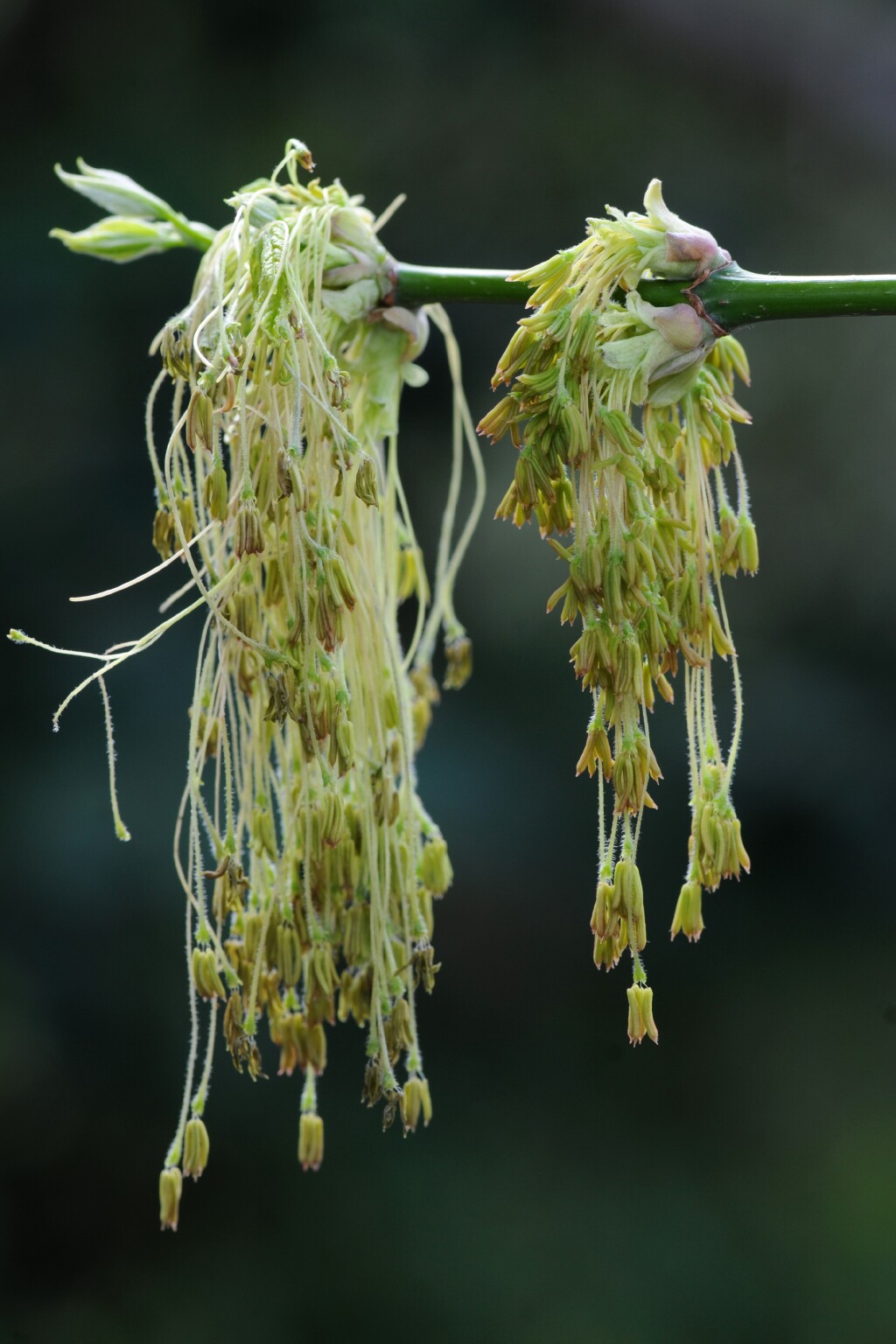Acer
Trees or shrubs, often deciduous. Leaves opposite, usually palmately or pinnately divided, rarely entire; stipules usually absent. Inflorescence a corymb, umbel, raceme or panicle. Flowers all or some unisexual; sepals 5 (rarely 4 or 6), free or sometimes shortly fused near base; petals free, equal in number to sepals and often resembling them; stamens 4–12, but commonly 8, filaments sometimes basally united with the prominent nectary disc, anthers basifixed or versatile, opening by longitudinal slits; ovary superior or half-inferior, 2-locular, usually prominently laterally compressed, ovules 1 or 2 per locule, styles 2, free or shortly united, stigma linear. Fruit a winged schizocarp, (a double samara), the mericarps each 1-seeded.
About 110 species mosty from cooler regions of Eurasia and northern America, extending to the tropics in Malesia. Widely grown for ornament. Four species naturalised in Australia.
Walsh, N.G. (1999). Aceraceae. In: Walsh, N.G.; Entwisle, T.J., Flora of Victoria Vol. 4, Cornaceae to Asteraceae, pp. 149–150. Inkata Press, Melbourne.
 Spinning
Spinning



